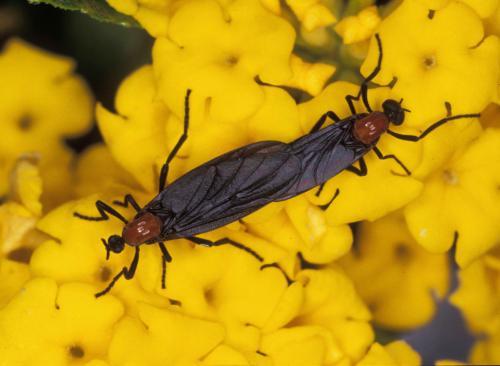
Love Bugs
The slow-moving lovebug, often attached to a mate, is a familiar sight to most people in the southern United States in the summer and early fall. These creatures are well known for splattering bug guts all over people’s cars, generally causing a mess.
Originally an invasive species from Central America, the lovebug—harmless to humans—is now found throughout Florida.

Origins
- Contrary to popular belief, the University of Florida did not introduce the love bug to the state. During the 20th century, lovebugs migrated from Central America, traveling through Texas and Louisiana before arriving in Florida.
Attractants
- Lovebugs are attracted to decomposing plant debris, but may confuse these odors with chemicals in exhaust fumes. Heat also attracts lovebugs. Both of these factors can lead them to congregate around highways.
Active Times
- Lovebugs are usually active between 10 a.m. and 6 p.m., in temperatures above 84°F.
Mating Season
- Mating peaks last about four weeks in May and September. Typically, two main generations occur during this time, but the insects can be seen throughout the summer.
Problems
- Lovebugs are mainly a nuisance. They do not bite, sting, or transmit diseases and are not poisonous. They can damage automobile paint if they are "baked" in the sun.
Solutions
- After a lovebug-filled drive, wash your car with water and scrub it to remove the lovebugs. A hood air deflector or screen will reduce the number of spattered lovebugs on your car. Using car wax will protect an automobile's paint.
Pesticides
- Chemical controls are ineffective, as the lovebug is widespread and continually drifts onto highways from adjacent areas.
Integrated Pest Management (IPM)
- For more information about lovebugs and IPM, visit IPM Florida's Lovebugs web page.
Sustainability And Conservation
Related Sites & Articles
UF/IFAS Publications
UF/IFAS Sites
UF/IFAS Videos

